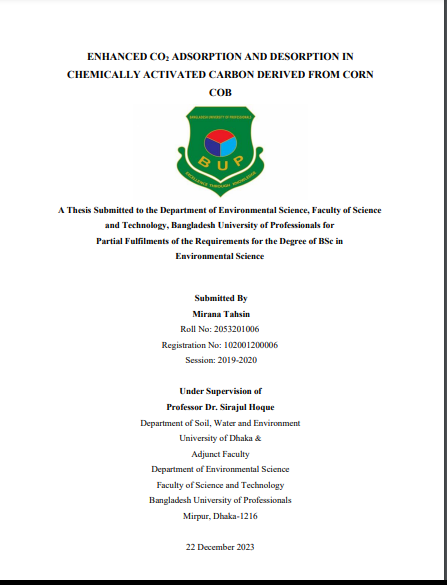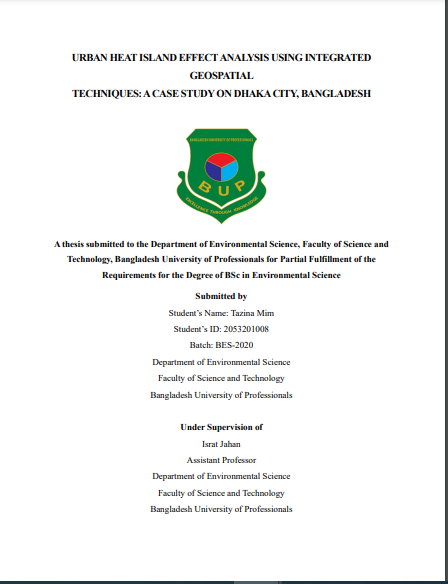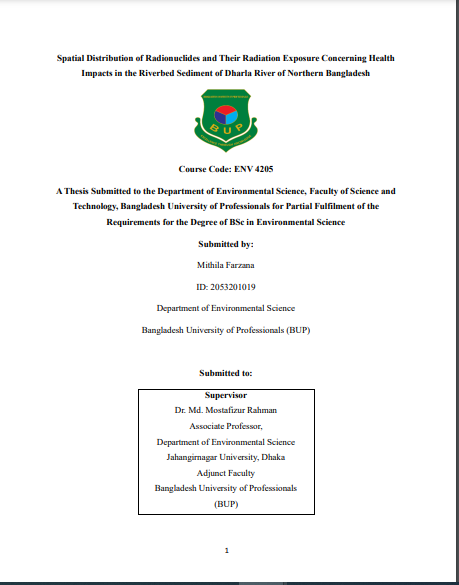
Enhanced CO2 Adsorption & Desorption in Activated Corn Cob Carbon. Air pollution accelerates the process of global warming. CO2 is the primary greenhouse gas responsible for global warming. The need to address global carbon emissions has led to the advancement of solid sorbents, such as activated carbons, for the purpose of CO2 capture.
The effectiveness of adsorption is influenced by the choice of preparation and source material. The cost-effectiveness of producing activated carbons for carbon capture from agricultural byproducts, such as corn cobs, has been demonstrated.
This study utilizes corn cob biomass, a cost-effective and readily available raw material, for the production of activated carbon. The biomass was subjected to activation using KOH at ratios of 1:1 and 1:3, at a temperature of 850°C.
The Modified Activated Carbon (MAC) samples, namely MAC-1 and MAC-3, were produced by treating biochar with a 1:1 and 1:3 ratio of KOH solution, respectively.
Background of the Study
Air pollution is a notable environmental challenge that significantly contributes to the broader problem of global warming. The primary factors responsible for this situation are greenhouse gases, including carbon dioxide (CO2), methane (CH4), chlorofluorocarbons (CFCs), and nitrous oxides (NOx). Additionally, indirect contributors such as Sulphur dioxide (SO2) also contribute to the occurrence of acid rain.
In response to the detrimental impacts of air pollution, nations across the globe have established specialized organizations to enforce international environmental regulations. The release of CO2 into the atmosphere can lead to acid rain and the corrosion of transportation and storage infrastructure due to its acidic nature.
Researchers are actively investigating new methods and materials to improve the efficiency of CO2 capture technologies in order to address the urgent need to reduce carbon dioxide emissions.
| Report Title : | Enhanced CO2 Adsorption & Desorption in Activated Corn Cob Carbon. |
| University Name : | Bangladesh University of Professionals |
| Submitted To : | Shamsunnahar Khanam (PhD) |
| Submitted By : | Majharul Islam |
| Total Page : | 84 |
The International Energy Agency (IEA) highlights the crucial role of CO2 Capture and Storage (CCS) technology in the pursuit of limiting global warming to less than 2°C. According to the IEA, projections indicate that by 2050, CCS technology could contribute approximately 19% towards the goal of reducing CO2 emissions, highlighting its crucial role in addressing the global need for CO2 reduction.

Outline of the Study
This study is organized into seven chapters:
❖ Chapter One: Introduction This chapter provides an overview of the study, including the background, problem statement, rationale, objectives, and research questions.
❖ Chapter Two: Literature Review This chapter provides a review and summary of relevant local and international articles pertaining to the thesis topic. It also identifies any gaps in the existing research.
❖ Chapter Three: Conceptual Framework This chapter presents the abstract representation of the research study, which is aligned with the research study goal of collecting and analyzing data.
❖ Chapter Four: Methodology This chapter provides a comprehensive overview of data collection and data analysis methodology.
❖ Chapter Five: Data Collection and Analysis In this chapter, the processes of data collection and data analysis have been carried out.
❖ Chapter 6: Results and Discussion This chapter presents a detailed interpretation and discussion of the results obtained from the data analysis.
❖ Chapter 7: Conclusion and Recommendations This chapter provides a summarized conclusion and recommendations for mitigating the problems.
❖ Reference This section includes the references.
Problem Statement
The main sources of air pollution in Bangladesh include brick kilns, open-air burning, automotive emissions, riverbank sand fields, coal and biomass burning, and industrial emissions.
According to Dr. Salam, a renowned air quality specialist, there was a significant decrease of around 80% in air pollution caused by transportation during the early months of the COVID19 pandemic until April of the previous year.
Following the cessation of the nationwide lockdown, the situation progressively worsened (CGS, 2023). The rising levels of carbon dioxide pose a significant concern due to their contribution to urban pollution and the acidification of precipitation.
According to Lee et al. increased atmospheric concentrations of these gases can result in various health problems, including hair loss, throat irritation, vision impairment, respiratory disorders, and severe infections.
Research Questions
The following possible research question might arise
- What is the most effective chemical activation ratio for producing high-quality activated carbon?
- To what extent is the efficacy of the generated activated carbon demonstrated in the adsorption and desorption of CO2?
Research Objectives
The study aims to achieve the following specific objectives:
- To assess the quality of activated carbon produced using different chemical activation ratios.
- ii. To evaluate the efficacy of the activated carbon in adsorbing and desorbing CO2.
Conclusion
The present study also involved an analysis of the adsorption and desorption experiment of carbon dioxide (CO2). Adsorption experiments were conducted for three different durations: 5, 10, and 15 minutes, using samples MAC-1 and MAC-2. The experimental results revealed that MAC-2 had the greatest adsorption capacity. It was also observed that as the duration of time increased, there was a noticeable decline in the rate of adsorption, ultimately leading to the saturation of CO2 after a period of 20 minutes.







